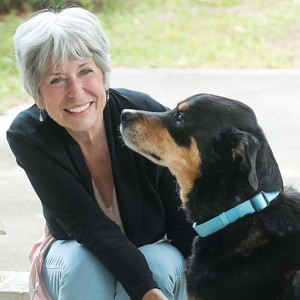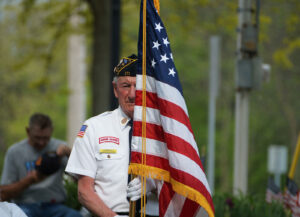It is a rather small scrap of simple cotton cloth. It is faded cream in color with a pattern of soft blue leaves printed across it. And it is fastened onto a large page of paper, along with half-a-dozen other small lengths of different bits of cloth and folds of ribbon. The page is one of many pages, bound into a very large, very old, book. And there are rows and rows of books just like it. And they are shelved and preserved within the Foundling Museum in London, England.
England in the 1700s was constantly wet, slicked and grimed, bone-deep cold, with steel-colored skies and frozen rivers, struggling through a mini-ice age.
There was also little work, scarce food, extensive illness. Parents grappled on a daily basis for the lives of their children. Mothers were often alone. And one of the ways they prevailed in the end was by surrendering their babies into the care of the London Foundling Hospital.
When a child was left at the door, the mother would pin to its garments a scrap of cloth. And she would keep a matching piece for herself. They were called “fabric tokens.” Then, when the mother was able, she would return and reclaim her child, and they would be reunited according to their matching pieces of fabric — their matching tokens. It was a time of considerable illiteracy, no photography, and no fingerprinting, but uniquely woven, distinct fabrics were becoming readily available. And that practice of matching bits of cloth was remarkably inventive, effective, and deeply poignant.
It seems to me that those fabric tokens — those small scraps of cloth — were in reality, tokens of relationship, carefully chosen scraps of love.
How fitting it seems for a mother and child to be bound to each other with something as tangible and homely as a piece of cloth — especially one cut or torn from the mother’s own clothing, the best she had. Cloth has a singular ability to remind and soothe and associate us — with our own pasts and childhoods as well as with our children. For generations, mothers have fondly packed away infant clothing — tiny booties and caps and sweaters — while nursery blankets have been kept by many babies long into toddlerhood as comforting connections to their mothers.
As far back as Biblical times, baby clothing has been noted and recorded with great care and meaning — Hannah bringing Samuel his little linen outfits that she made for him every year; Mary wrapping Jesus in strips of swaddling cloth, carefully brought with her on that long and arduous journey leading up to his birth. (Perhaps Hannah and Mary kept bits of those fabrics in some sort of remembrance boxes.)
And so, that one small scrap of cream-colored cloth with blue leaves, pinned inside a London Foundling Museum record book, seems to speak unmistakably to the texture and strength of the love between a mother and child. But perhaps even more eloquent is that on the reverse side of that particular bit of cloth there is still carefully stitched a little cutout paper heart — and written on the heart is the message: “Anne Smith was born 4 January 1764.” And I suspect that this may have been the mother’s attempt to help her infant daughter hold fast to her identity. To let her know that her mother had loved her and had given her a name and had held her close for as long as she could. And then, at the age of 6 months and 20 days, her mother had let her go, because she loved her too much not to.
I want to believe that Anne Smith’s mother was able to come back for her, and that she brought with her the matching scrap of cream cloth with blue leaves on it. And, because of those matching fabric tokens, they found each other again. I would also hope that Anne never lost that bit of cloth that bound her to the love of her mother. That she kept it near and precious and never lost sight of what it really was — not simply a scrap of old fabric, frayed and tattered and smudged, but an enduring remembrance of the love it represented.
In the end, I suspect it may always be those small scraps of love that mean the most — the tokens, the bits and pieces, torn from a fabric that ultimately connects us one to another.
© Marti Healy 2021, Used with Permission






